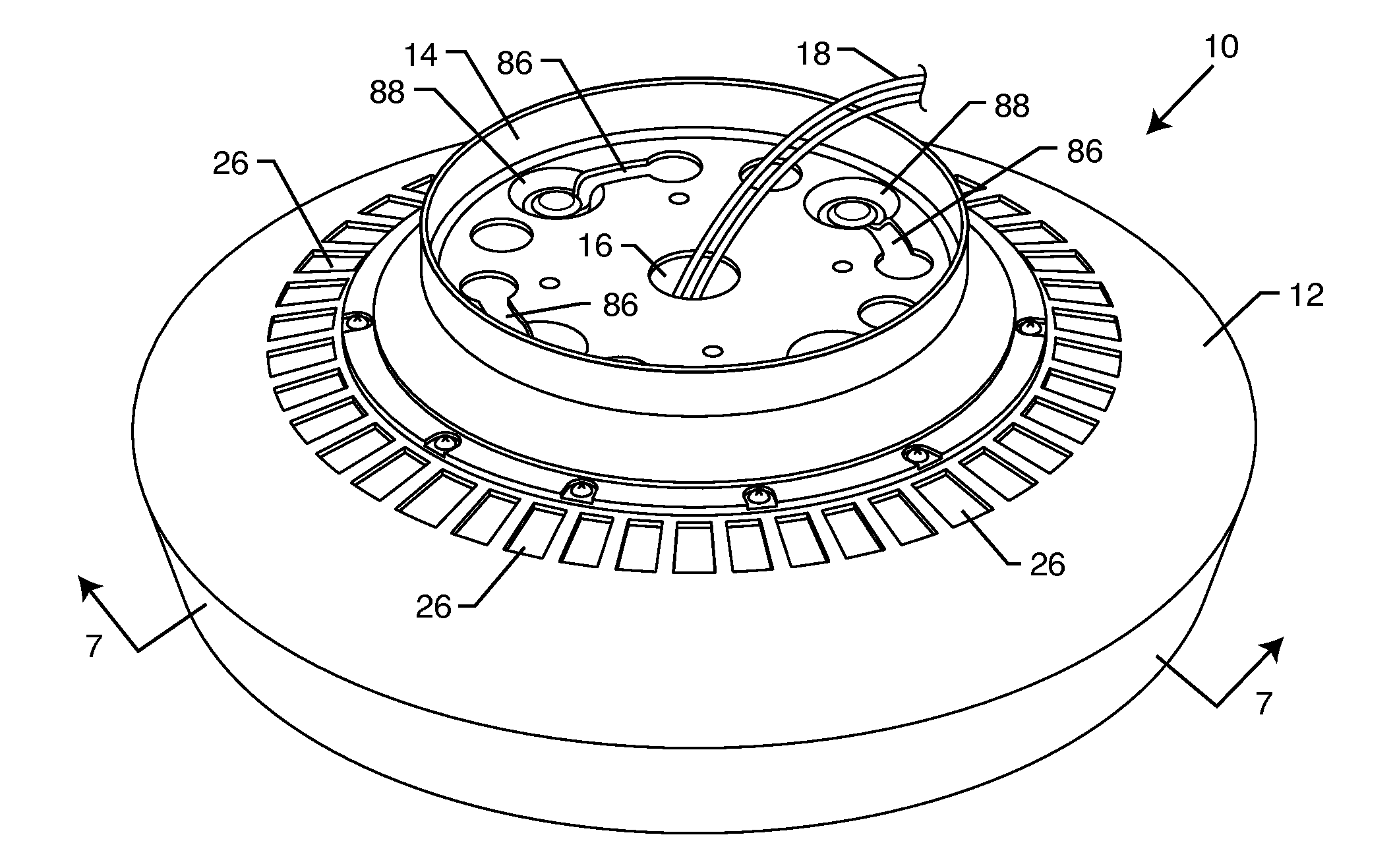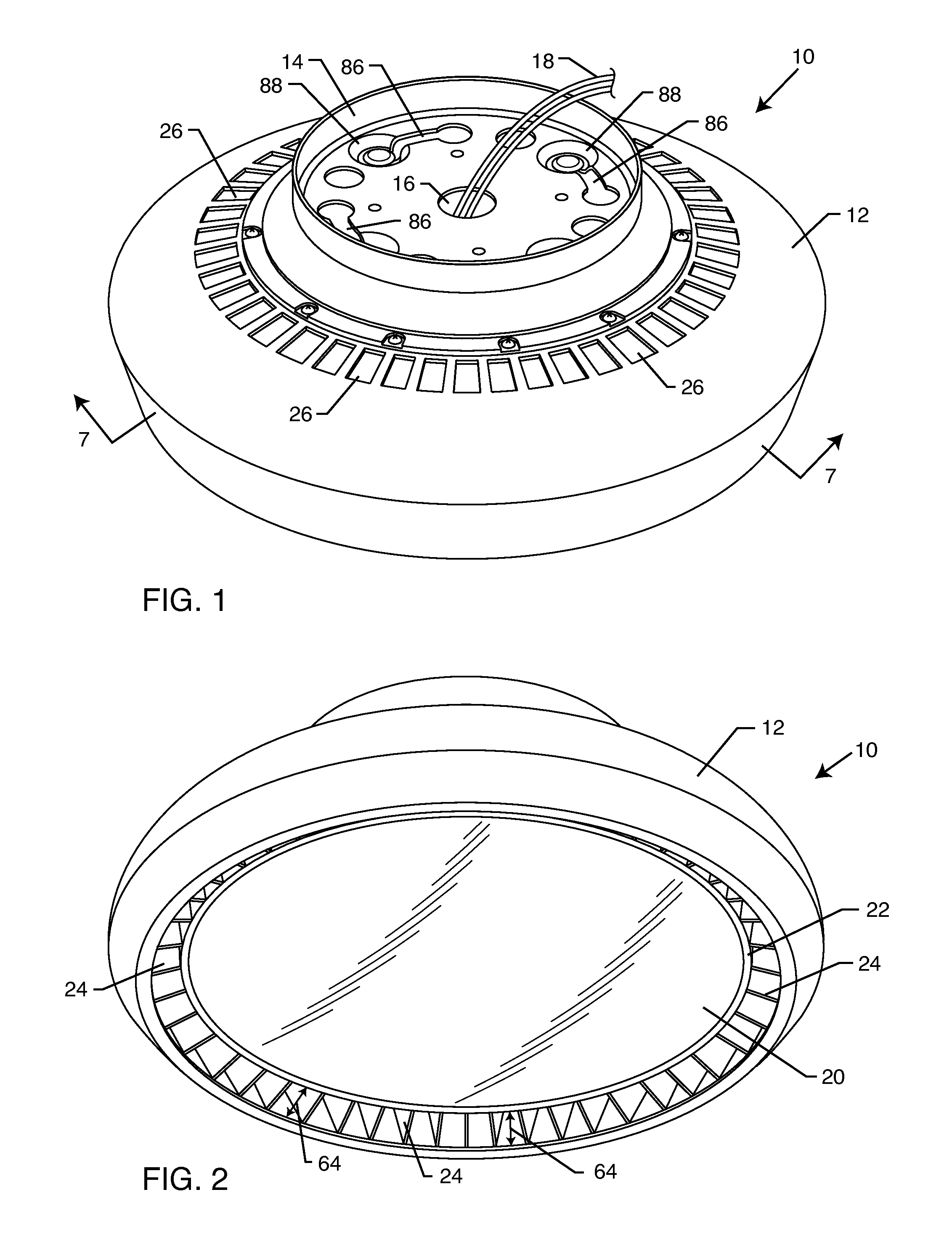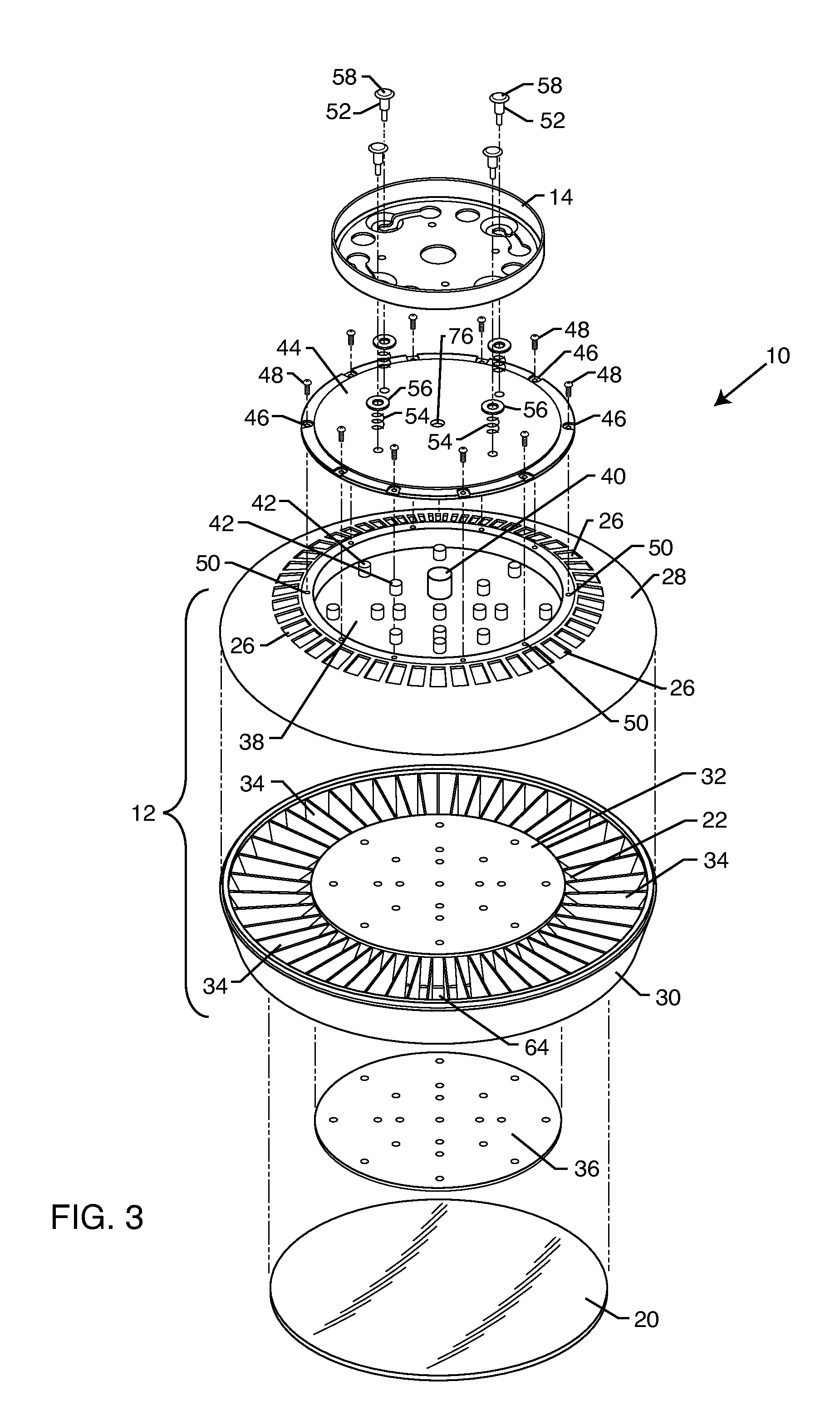Heat sink system
a heat sink and heat sink technology, applied in the direction of fixed installation, lighting and heating apparatus, lighting support devices, etc., can solve the problems of inability to replace a non-functioning fan, and affecting the operation of the devi
- Summary
- Abstract
- Description
- Claims
- Application Information
AI Technical Summary
Benefits of technology
Problems solved by technology
Method used
Image
Examples
Embodiment Construction
As shown in the drawings for purposes of illustration, the present invention for an improved heat sink system is illustrated embodied in an industrial light, referred to generally by the reference number 10. In FIG. 1, the industrial light 10 is illustrated having an outer heat sink 12 coupled to a mounting bracket 14 through a snap and turn mounting system. The mounting bracket 14 includes a central aperture 16 providing access to the interior of the industrial light 10. As shown in FIG. 1, a pair of electrical wires 18 extend out from within the outer heat sink 12 and the mounting bracket 14 to provide electrical energy to a device located within the interior of the outer heat sink 12. Positioning the central aperture 16 to the interior of the mounting bracket 14 ensures that the industrial light 10 can be attached to the mounting bracket 14 via the aforementioned snap and turn mounting system without the electrical wires 18 binding, twisting or otherwise getting caught on compone...
PUM
 Login to View More
Login to View More Abstract
Description
Claims
Application Information
 Login to View More
Login to View More - R&D
- Intellectual Property
- Life Sciences
- Materials
- Tech Scout
- Unparalleled Data Quality
- Higher Quality Content
- 60% Fewer Hallucinations
Browse by: Latest US Patents, China's latest patents, Technical Efficacy Thesaurus, Application Domain, Technology Topic, Popular Technical Reports.
© 2025 PatSnap. All rights reserved.Legal|Privacy policy|Modern Slavery Act Transparency Statement|Sitemap|About US| Contact US: help@patsnap.com



